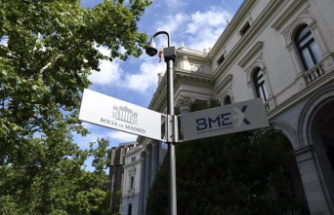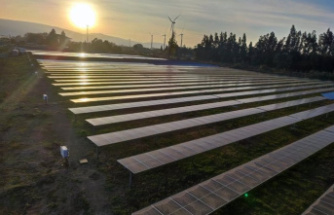The war of the rail between China and Japan rages. The chinese giant rail CRRC (China Railroad Rolling Stock Corporation) has unveiled the prototype of a train "Maglev", operating by magnetic levitation (this eliminates friction with the rail). This train will be capable of reaching 600 km/h commercial speed. What linking Shanghai and Beijing (1300 km) in only about 3: 30, against a current route almost twice as long.
" READ ALSO - The SNCF is investing $ 3 billion in the TGV of the future
The railway builder, who has not yet made a full-scale test, hope to be able to launch the production of this train of new generation in 2021. What would compete with the railway company of japan, JR Central, who broke speed records in 2015, rolling to 603 km/h, a Maglev train. The previous holder of the title was the French TGV, with a speed of 574.8 km/h, achieved in 2007.
This technology, however, is not recent. This train is futuristic uses a technology developed in Germany during the 70's, imagined from the 30s. The project of Maglev train Transrapid, which was to connect Berlin to Hamburg to more than 400 km/h was abandoned in 2000 for reasons of cost. In fact, the initial investment is directly related to the length of track to build and equip, guides to electrical
"Fly" above the railsThis type of train has the distinction of never touching its rails, and "fly" above. The basic principle of Maglev is to use the repulsive force between two magnetic poles similar to keep the train above the ground. The propulsion is also produced by the alternation of horizontal phases of attraction and repulsion between the north and south poles.
germany's Siemens has developed the technology for the Shanghai Transrapid in China. But its trains to magnetic levitation are very different from those developed by the Central Japan Railway Company. While the Maglev germans are lifted by electromagnets that are placed directly under the train, the SCMaglev in japan is lifted and propelled by magnets placed vertically and the other of the flanks of the train. With this system, the levitation of the train is more simple to adjust, and allows you to "fly" at 10 cm above the track, compared to just 1 cm for the Transrapid German. The main drawback being that the SCMaglev japanese needs wheels and retractable to move less than 100 km/h.
" READ ALSO - Hyperloop: France welcomes the train supersonic
For the Chinese, it is, therefore, to compete with the Japanese, whose company Central Japan Railways is currently building a line from Tokyo to Nagoya capable of circulating a such train, and that is expected to be completed in 2027. A project, however, very expensive infrastructure: the total cost of the link between Tokyo and Osaka is expected to exceed 70 billion euros.
Date Of Update: 29 May 2019, 00:00












